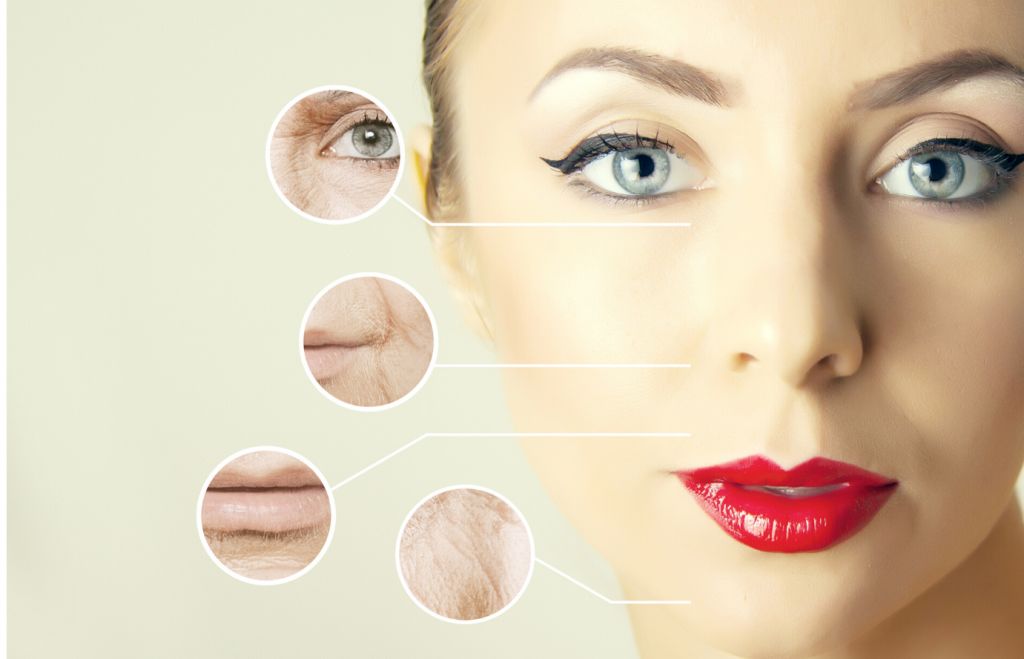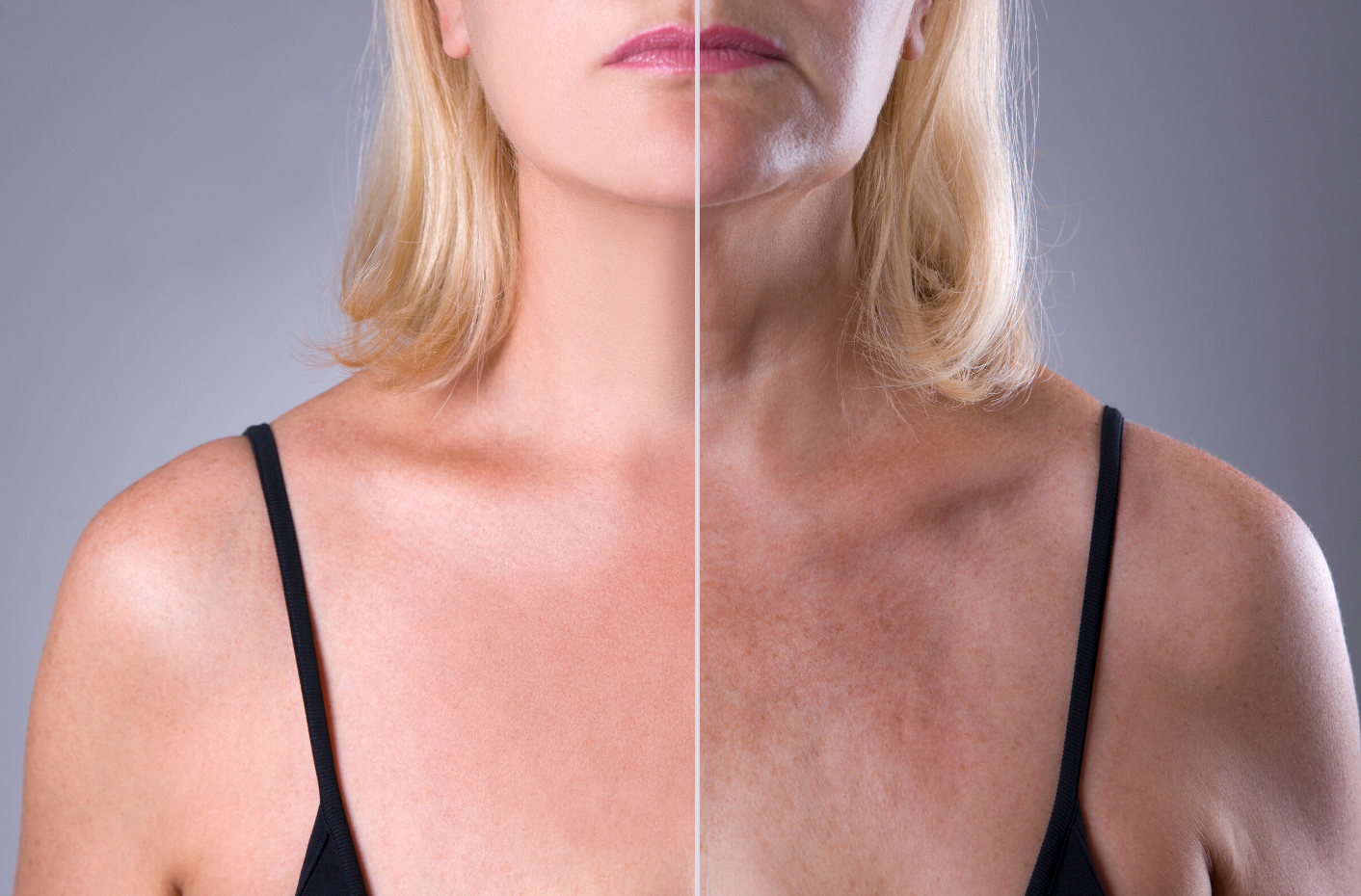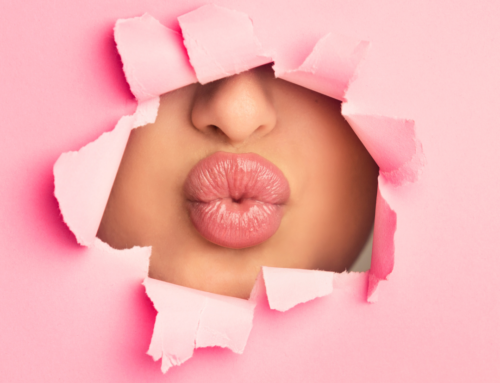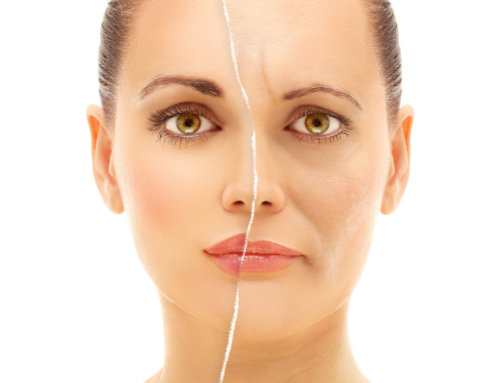If you’re like many people, reversing or slowing the signs of aging is a big concern. Yet, so many options exist today—natural treatments, surgery, minimally-invasive procedures and millions of skincare lines—how do you choose? Let us show you how! We share preventive measures to take NOW and review the top anti-aging treatments available today.

What factors cause the skin to age, and how can I avoid them?
Environmental factors (HELLO UV rays and free radicals!), unhealthy habits, genetics, hormone imbalance and ethnicity can all play a role in premature aging of the skin. Let’s take a closer look at these factors and how to limit their impact.
PREVENTIVE SKIN ANTI-AGING TIPS PART 1:
1). Environmental factors and free radicals. The skin is our first line of defense against exposure to UV radiation and natural and chemical pollutants in the air and elsewhere. According to recent research published in the journal Dermatology Research and Practice (DRP), these environmental stressors cause the release of free radicals and other issues. Free radicals—unstable atoms that damage cells in the body—can lead to illness and accelerate aging, which includes aging of the skin.
And the sun’s UV rays are THE worst when it comes to aging skin. In fact, the DRP researchers estimate that UV radiation accounts for up to 80 percent of the skin damage our population experiences today.
· To combat UV rays, stay out of the sun! If you must be outdoors, use sunscreen with maximum protection no less than 30 SPF (preferably 50 SPF or higher). Wear wide brimmed hats and sunglasses for added protection.
· To kick free radicals to the curb, feed your cells with foods high in protective antioxidants (vitamins A, C, E and other nutrients).

PREVENTIVE SKIN ANTI-AGING TIPS PART 2:
2). Unhealthy lifestyle. You know the drill here, right? Consuming too much alcohol, abusing other substances (recreational and prescription drugs), smoking, physical and emotional stress, unhealthy diet (poor nutrition and overeating), not getting enough sleep and low activity levels are all bad for your health. These unhealthy habits may also contribute to premature aging of the skin.
· To get your diet and exercise program on track, meet with a dietitian or your healthcare practitioner to develop a strategy for success.
· To tackle your vices ask your medical practitioner for advice and resources to help you quit. If you need professional help, he or she can recommend an addiction specialist or 12-step program to guide you.
· To improve sleep allow yourself more time to sleep, and if you have insomnia ask your practitioner to help you find out why.
· To address stress, start by reading our recent blog on Detox Diets, Cleanses and Teas. We discuss how to deal with toxic emotions that stress us out.
PREVENTIVE SKIN ANTI-AGING TIPS PART 3:
3). Genetics and hormones. While the process of aging is highly complex, heredity may be one reason some people age earlier than others, thanks to genes passed down from previous generations. Researchers at the German National Genome Research Network 2 (NGFN-2) also suggest there is reason to believe hormones play a role in the aging process, including aging of the skin.
In research published by NGFN-2 in the journal Experimental Gerontology, the researchers stated: “In particular, hormones are decisively involved in the generation of aging. Over time, important circulating hormones decline due to a reduced secretion of the pituitary, the adrenal glands and the gonads or due to an intercurrent disease. Among them, serum levels of growth factors and sexual steroids show significant aging-associated changes.”
· To optimize genetics when aging is in your genes (say your parents or other family members tend to age earlier than other people) ask your healthcare provider about hormone optimization options and if hormone replacement therapy could benefit you.

PREVENTIVE SKIN ANTI-AGING TIPS PART 4:
- 4). Ethnicity and skin type. How your skin ages may also differ based on your ethnicity because skin color, composition of the dermis (the thicker layer of tissue underneath the skin) and other factors vary across ethnic groups. Research on this topic was recently published in The Journal of Clinical and Aesthetic Dermatology (JCAD).
The authors agree that cumulative sun exposure is the biggest culprit when it comes to aging skin. They also note that people of color are less susceptible to sun-induced damage and “the clinical manifestations of aging are less severe and typically occur 10 to 20 years later than those of age-matched white counterparts.”
Their research also revealed that “Asian and black skin has thicker and more compact dermis than white skin, with the thickness being proportional to the degree of pigmentation. This likely contributes to the lower incidence of facial rhytides (wrinkles) in Asians and blacks.”
PREVENTIVE SKIN ANTI-AGING TIPS PART 5:
Avoid sun damage by staying out of the sun and using sunscreen as noted above. IMPORTANT: Just because you have darker skin doesn’t mean you should skip sunscreen! People with darker skin are still at risk for aging skin and skin cancer caused by sun exposure.
· Minimize the signs of aging by doing your best to live a healthier life (see number 2).
Late to game when it comes to preventive anti-aging measures? We can help!
How to fight the signs of aging with natural, minimally-invasive and high-tech treatments!
First, It’s important to note that it’s never too late to take preventive steps to keep your skin looking more youthful. However, if you do want to reduce the fine lines, wrinkles, sagging jowls, dry skin or uneven skin tone associated with aging skin, you’re in luck.
Thanks to advances in technology, anti-aging treatments are plentiful today. Many are minimally invasive as well, such as these popular options:
Botox and Dysport—brand names of the drug botulinum toxin A—are by far the most popular FDA-approved cosmetic procedures to treat (and prevent!) wrinkles.
Hyaluronic acid (HA) dermal fillers—brand names Restalyne, , Juvaderm, Revanesse Versa and others—address volume loss and are commonly used to reduce lines and lift skin around the nasolabial folds and jowls.
Bellafill—a non-synthetic collagen dermal filler—is a long-lasting (5-10 years!) injectable used to treat sagging jowls, nasolabial folds, sunken cheeks and acne scars.
Microneedling helps boost collagen production and rejuvenate skin. This minimally invasive procedure may help revive dull skin, minimize acne scars and improve skin tightness.
Non-surgical PRP facelift combines the science of HA fillers and platelet-rich plasma (PRP) to turn back time. This procedure activates unipotent stem cells in the skin and stimulates cells to grow new, youthful, plumper skin.
CO2 fractional laser procedure—a skin resurfacing treatment that removes thin layers and boosts collagen production—is used to improve skin tone, laxity and texture. Bye, bye fine lines, acne scars, age spots and stretch marks!
And that’s just the tip of the iceberg!
Facials, chemical peels (in-office and OTC) and high-quality skincare products can also help minimize the signs of aging. Just be sure to ask an experienced, licensed aesthetician which treatments and products she recommends.
While there are plenty of wonderful over-the-counter anti-aging solutions available, there are also many untested, unproven and even dangerous products sold online. For optimum safety and results, consult a skincare specialist.
Ask the anti-aging experts at EVEXIAS for advice!
If you want to learn more about natural, high-tech and minimally-invasive treatments to fight the signs of aging, contact us. Our experienced, licensed aestheticians would love to help you weigh your options.
Subscribe Today!
Be the first to get latest updates and
exclusive content straight to your email inbox.
We do not spam. You can unsubscribe anytime.






